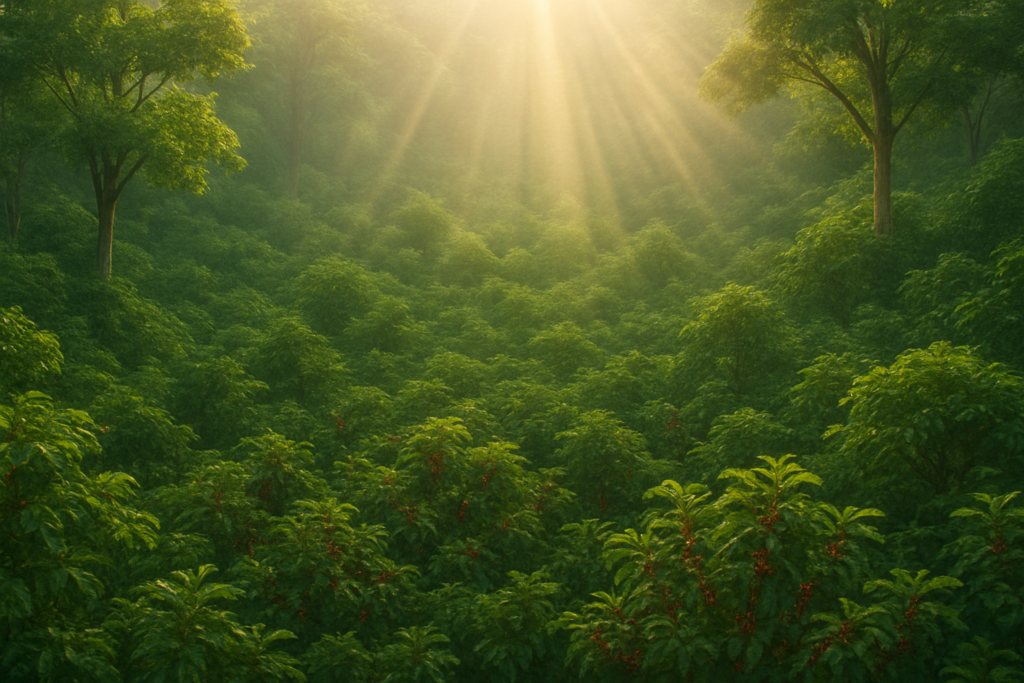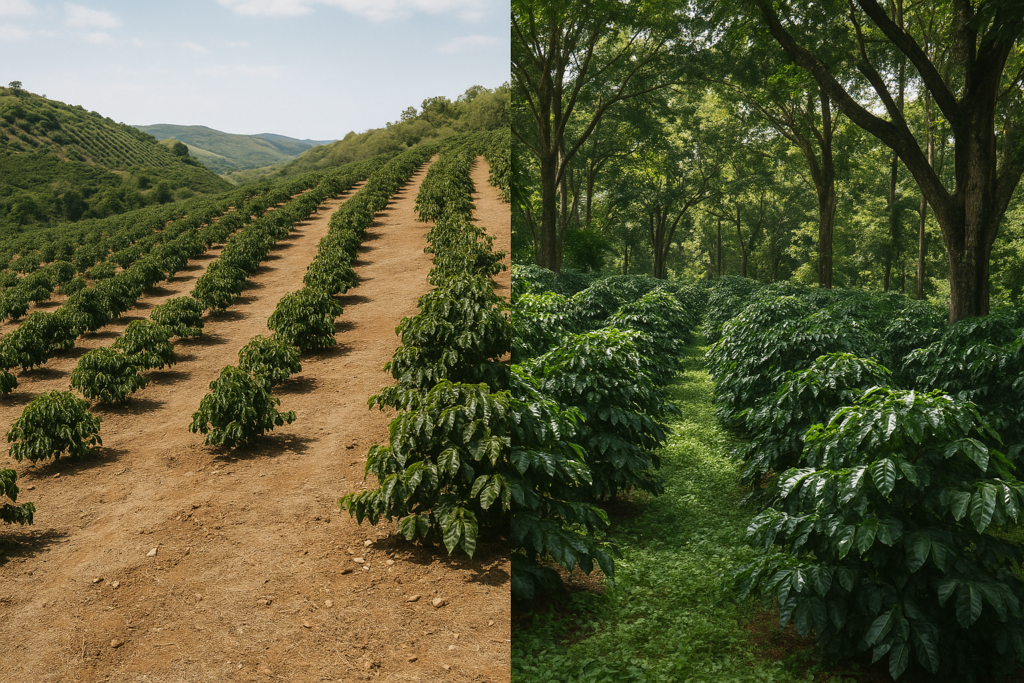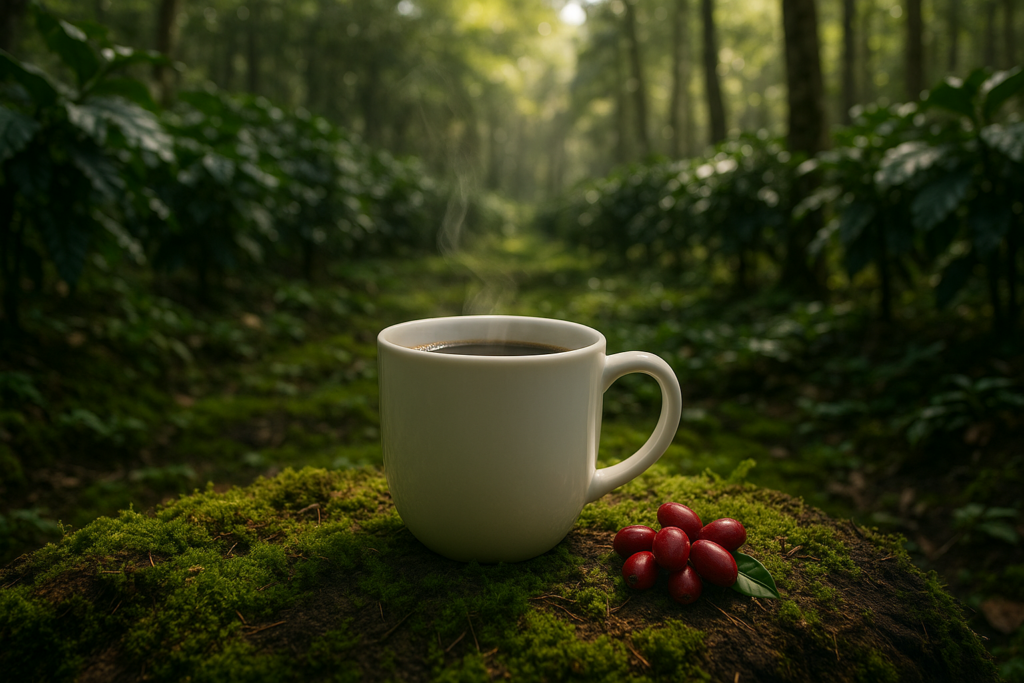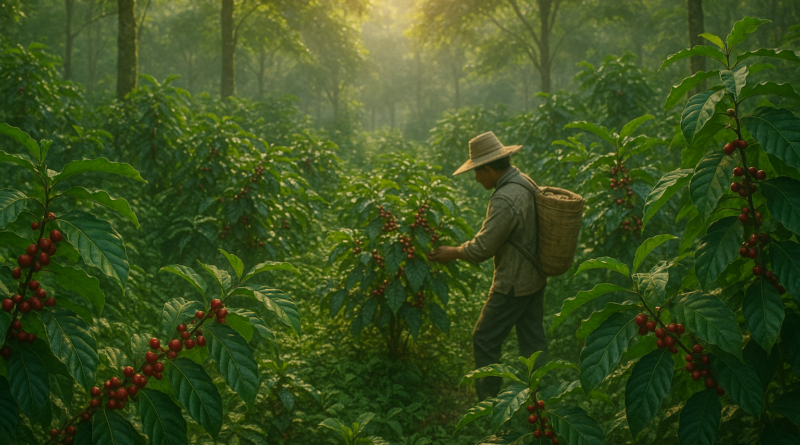Organic Shade-Grown Coffee: The Ultimate Eco-Friendly Brew for Conscious Consumers
Why Shade-Grown Coffee Works With Nature—Not Against It
Not all coffee grows the same way. While modern industrial farms often grow beans in direct sun, traditional coffee plants actually thrive in shade—beneath the cover of taller trees in biodiverse ecosystems.
Shade-grown coffee is exactly that: beans cultivated beneath tree cover. This method doesn’t just help the coffee plant—it supports the entire environment around it. Trees protect soil from erosion, conserve moisture, and naturally regulate pests. They also create habitats for birds, insects, and other species, turning coffee farms into living ecosystems.
Compared to sun-grown plantations, which often require deforestation, shade-grown farms offer a slower but more sustainable path—one that prioritizes long-term soil health, water balance, and biodiversity over short-term yields. For the conscious consumer, this means your cup of coffee could reflect a farming method that works with nature, not against it.
How Organic and Shade-Grown Coffee Often Go Together
You’ll often find “organic” and “shade-grown” on the same coffee label—and that’s no coincidence. These two farming methods naturally support each other.
Organic coffee is grown without synthetic chemicals. Instead, it relies on compost, healthy soil, and natural ways to manage pests. Shade-grown environments help make this possible. Trees protect the plants, keep the soil moist, and create the right balance of temperature and humidity for nature to do its job. The fallen leaves from shade trees enrich the soil, while the biodiversity in these farms strengthens natural pest control. In other words, shade helps create the kind of healthy ecosystem organic coffee needs.

It’s worth noting that some farms follow organic practices without being officially certified. That doesn’t mean they’re not doing things right—it just means they haven’t gone through the formal process. But if you’re looking for proof of impact, choosing coffee that’s both certified organic and shade-grown—especially from programs like Bird Friendly®—can offer that extra level of confidence.
How Shade-Grown Farms Help Protect Wildlife
One of the clearest ecological wins of shade-grown coffee is the protection it offers to wildlife. Unlike sun-exposed monocultures, shaded farms retain native trees and understory vegetation—critical for birds, insects, and small mammals.

Studies have shown that shade-grown farms can support nearly as many bird species as natural forests. This is vital for migratory birds, especially in Central and South America, where large-scale deforestation has pushed many species to the brink.
Pollinators like bees and butterflies also thrive in shaded systems, which offer year-round shelter, nectar sources, and stable microclimates. These creatures aren’t just beautiful—they’re essential for plant reproduction, both on coffee farms and in the surrounding ecosystem.
Some certifications take this further. Smithsonian’s Bird Friendly® standard, for example, requires not just organic practices, but also detailed habitat protection criteria—like canopy height, tree diversity, and native species preservation.
So yes, when your beans come from a shade-grown source, they’re doing a lot more than fueling your morning. They’re helping protect the delicate balance of life that surrounds every coffee-growing region.
Environmental Benefits Beyond the Farm
The benefits of shade-grown coffee don’t stop at healthier plants or happier birds. They reach far beyond the farm—and that’s part of what makes this growing method so powerful.
For starters, trees help protect the soil. Their roots hold the ground together, while fallen leaves break down into rich, fertile topsoil. That natural layer of nutrients gives coffee plants what they need to grow—without synthetic fertilizers. It also keeps the land healthy for the long run.
Shade-grown farms also manage water more wisely. Tree cover softens heavy rainfall, helping water soak into the ground instead of washing away. This reduces runoff, which can carry pollution into rivers, and helps keep local water sources more stable.
And there’s the climate benefit. Trees pull carbon from the air and store it, which means shaded coffee farms can actually help fight climate change. While coffee itself isn’t a big polluter, clearing forests to grow it in the sun does serious damage. Keeping trees in place means lower emissions and more climate resilience.
Because these farms work with nature—not against it—they often use fewer chemicals, less irrigation, and fewer fossil-fuel inputs. That all adds up to a smaller environmental footprint—and a cup of coffee you can feel even better about.
How to Spot Real Shade-Grown, Organic Coffee
Here’s the tricky part: “shade-grown” isn’t a regulated term. That means it can appear on a label without any real oversight or standards behind it—so how can you tell if the coffee is truly grown the way it claims?

A good place to start is with certifications. Labels like USDA Organic or EU Organic confirm that the coffee was grown without synthetic chemicals. If you see the Bird Friendly® label from the Smithsonian Migratory Bird Center, that’s an even stronger sign. It requires both organic certification and strict standards for protecting forest habitats. The Rainforest Alliance seal also points to broader sustainability goals, including forest and wildlife protection, though it doesn’t necessarily mean the coffee was grown in shade.
Beyond certifications, transparency is key. Brands that openly share where their beans come from, name specific farms or regions, or talk about how they grow their coffee—often with photos and details about agroforestry practices—are usually worth trusting. When a company is proud of how their coffee is grown, they tend to show it.
On the other hand, be careful with vague claims like “eco-roast,” “sustainable,” or “green-friendly” if there’s no clear explanation behind them. These buzzwords might sound good but don’t always mean much when it comes to real environmental impact.
The bottom line? Look for traceability, not just good-looking packaging. Brands that are serious about sustainability usually make it easy to find real information—whether it’s through clear labels, farm details, or transparent sourcing stories. If those things are hard to find, the coffee might not be as eco-friendly as it claims.
A Small Choice With Real Impact
You don’t need to overhaul your entire coffee routine to make a difference. Even choosing shade-grown, organic beans once a week is a step toward a more thoughtful kind of consumption.
Every cup grown under trees supports more than just flavor—it helps protect forests, wildlife, soil, and water. It supports farming communities trying to work sustainably, often with fewer resources and more risk. And it encourages an industry to invest in systems that value balance over speed.
No, one bag of coffee won’t save the planet. But choices like these are part of something bigger. When more people ask for coffee that’s grown with care, more of it gets made. And that’s how change starts—with one small, conscious sip at a time.

